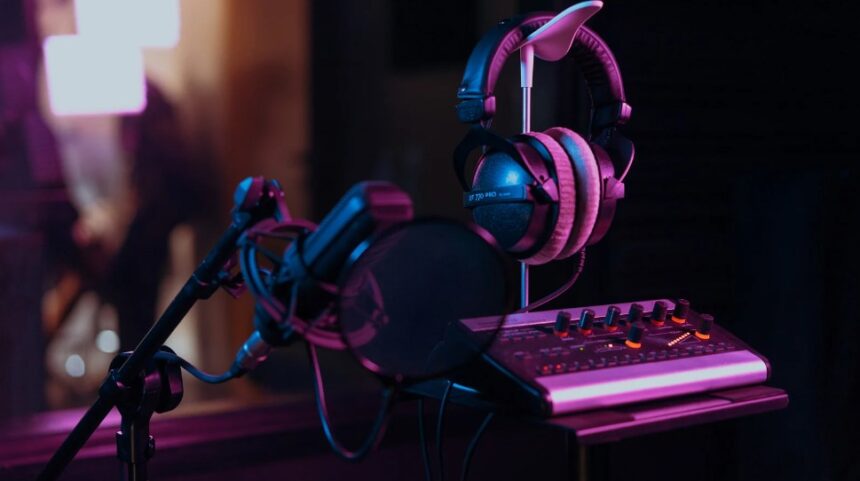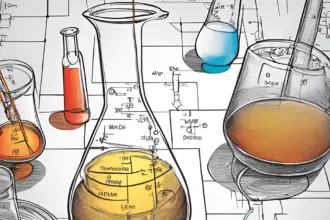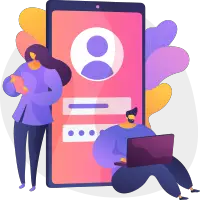Merging music with technology in converting the different notes and sounds produced by instruments and voices into written compositions is called music transcription. Music writing software has become a basic necessity for musicians, teachers and even hobbyists because it handles the transcription process which used to be a tedious exercise. In this article, we will examine the very best music transcription software of today, looking at their features, advantages and disadvantages, among other issuses. It does not matter whether you are a seasoned professional musician or a budding songwriter, there is something in this compilation for you as well.
What is Music Transcription Software?
Music transcription software is any software program that interprets the audio files practically into sheet music through specific requirement algorithms. In other words, this software records a piece of music, and people literally transcribe it into sheet music, using the computer or any other music notation software such as Midi files. The software is critical for those musicians who wish to record their own inventive music, gain knowledge about pre-made recordings, or even design compositions for other musicians.
Why You Need Music Transcription Software
As much as it was able to do, transcription hung out by the door and waited for further instruction until eager people began to pick it up, transcribe, and create derivative works. The transcription software is here to lessen the workload, increase concentration on medium, and minimize the risks of making blunders. Whether it’s a jazzy arrangement of many shifting parts, a cheerful song of a dozen layers, or the comprehension of a newly bought work, these solutions give precision and speed that is hard to find elsewhere.
Top Music Transcription Software
These are some of the notable transcription software packages for music which have been put together according to the needs and target users. Without further ado, let’s jump right into what are the unique offerings of these pans.
Sibelius Ultimate
Sibelius has been one of the household names in the world of music and more specifically music notation. Sibelius Ultimate is from Avid and it is a section packed with tools for both transcription and composition and is quite powerful.
Key Features:
User-Friendly: Simple methods of entering notes include the use of a MIDI keyboard, computer keyboard or mouse.
AudioScore Ultimate Integration: Which makes it possible to create notation from audio.
Real-Time Note Entry: You can play your MIDI keyboard and Sibelius will record your notes in real time as you play your keyboard.
Collaboration Tools: Send scores to other peoplewirelessly and collaborate with them in real time.
Pros:
Professional output with advanced features.
Very good especially on the complex compositions.
Excellent cross-platform support with other Avid products.
Cons:
You will definitely need some time to get use to the software.
Expensive, more so if one is a novice.
Download Link:
Download Sibelius Ultimate
MuseScore.
MuseScore is a free to use and a desktop based open source music notate that has gained a lot of fame among music lovers. It does not come with many features but offers basic features at affordable rates.
Key Features:
Free and Open Source: It is free to use and often improved with updates and community updates.
Supports Various Formats: Import and/or export MIDI, MusicXML, PDF, etc.
Sheet Music Library: You can load scores uploaded by countless users.
Plug-in Support: Functional system providing a variety of the plug-ins.
Pros:
Free with lots of features.
Quick to understand and operate.
Helpful even in case of many users resources.
Cons:
Some advanced features are lacking in plenty or altogether missing in contrast to the ones available in one’s big brother.
From time to time some glitches or bugs may come up.
Download Link:
Download MuseScore
AnthemScore
AnthemScore is an AI tool that enables the user to convert any body of audio, whether vocal or instrumental, to written sheet music. The main strength of the program is that it helps in creating a score from an audio record without much strain.
Key Features:
AI-Powered Transcription: Audio to notation is done using machine learning algorithms.
Visualize Audio: A spectrogram is used to look at the music.
MIDI Editing: The output can be modified through MIDI editing.
Batch Processing: This allows you to change a lot of audio files at the same time.
Pros:
Keeps most of the ai transcription perfection.
User-friendly interface meant to be used for short intervals only.
Outstanding even if dealing with intricate musical works.
Cons:
No special features except for the transcription part.
Not recommended for situations that require real-time notes or composition.
Download Link:
Download AnthemScore
Transcribe!
As the name suggests, this software is particularly purposed for transcription rather than notation. It is not a software for generating scores from notes but rather a software that assists with the transcription process by slowing down music, looping portions, and identifying sounds.
Key Features:
Slow Music Down: Helps you transcribe difficult sections of music at substandard speed without altering the tone.
Detect Pitch: Has the functionality of identifying notes and chords.
Event Marking and Looping: Allow efficient concentration on the intended plans by looping some parts and placing markers.
Inbuilt MIDI Controller: Enables transcription with the help of a MIDI controller.
Pros:
Great device for transcription manually.
Good to practice and transcribe high ropewalk walk.
Economically priced instead of purchasing the entire transcription software.
Cons:
Cannot generate notation automatically.
Requires manual input in order to have musical sheets created.
Download Link:
Download Transcribe!
Notion 6
The giant of the torn speakers, Notion 6 by PreSonus is yet another good alternative for composers and arrangers as defined by folio north. It offers all the features of classical notation, and includes advanced audio features that allow further composing in addition to transcription.
Key Features:
Creates A Musical Score: Music can be handwritten on a tablet, and Notion can read and type it.
Studio One synchronization: Integrate your work with PreSonus’s DAW.
Recorded Sounds: It is possible to hear samples from the London Symphony Orchestra or high quality sound samples from other libraries.
Video Synchronization: To video, it is recommended to record transcription, perfect for perfecting the orchestral score.
Pros:
There are advanced tools for preparing specific musical scores and composing new pieces.
Successful combination with PreSonus and other factories.
Good sound reproduction.
Cons:
It can be a bit challenging for first-timers.
I’m not really recommending it for someone who uses it only once in two years.
Download Link:
Download Notion 6
Finale
Finale is yet another player in the world of music notation software. Variously and informally termed ‘the most flexible and amorphous product in the world’; it is much liked by all professional composers and arrangers.
Key Features:
Custom Notation: Client can create any desirable form of notation.
Intelligent Human Playback: Play fine music just as it is supposed to be played.
SmartMusic compatibility: ScoreCloud uses SmartMusic for educational practice and performing.
Large Number of Templates: There are lots of templates available at the beginning so you can get a head start with your project.
Pros:
Powerful program, which is acknowledged around the world as a standard in the industry, including areas of music notation.
Great for very intricate and professional compositions.
Extensive amount of configuration options.
Cons:
High price, steep learning curve.
Due to its requirements, would not be usable on an average PC.
Download Link:
Download Finale
ScoreCloud
ScoreCloud aims to be to music notation software what Google Docs is to word processors. It is a very useful online software for notating notation of your spontaneous musical thoughts and ideas.
Key Features:
Transcription is automatic: It is possible to play, sing or record with MIDI and generate music sheets.
Cloud Syncing: Save your scores and access them anytime, anywhere, on any device.
Collaboration Tools: Present your scores to anyone so that the work can be done together at the same time.
User-Friendly Interface: Simple and easy to understand.
Pros:
Good for jotting down ideas at a moment notice.
Cloud, One can access the entire software from more than one device.
Most appropriate for joint endeavors.
Cons:
Mostly limited to what can be done offline.
Does not possess as many features as other software designed for professional use.
Download Link:
Download ScoreCloud
Choosing the Right Music Transcription Software
Because there are many options as to what music transcription software to go for, the decision should be based on one’s needs, budget as well as expertise. Here are a little points to ponder about:
Purpose
Composers: They will need applications for composing and arranging complicated works like Sibelius, Finale, or Notion.
Educators and Students: In such MuseScore and ScoreCloud the interface is good and there is a low price.
Manual Transcribers: If you do not contain any sytem or any software for doing manual transcription then Transcribe! is for you.
Budget
Free Options: The best available option in this case is muse score to its free cost and a wide range of features.
Paid Options: Weigh the cost of the software against how many features it offers. Sibelius, Finale, and Notion cost levels are 3 most expensive choices.
Ease of Use
Beginners: Programs like ScoreCloud and MuseScore are simple to learn and to work with.
Advanced Users: Programs like Sibelius and Finale have more advance feature although they are time consuming to learn.
Integration
DAWs: If you edit with DAWs, choose Plug-ins from manufacturers that allow fluid integrations, as Notion does with Studio One.
Collaboration: In case real time collaboration is a must, ScoreCloud and Sibelius are great for this purpose.
Conclusion
There is a rich diversity in the music transcription software world, having varying tools tailored for each musician’s level. Every musician will appreciate the range of available software regardless of their level in composition; it can make all the difference for how one externalizes their musical ideas.
Choose wisely, try and test the functionalities that they serve and opt for the one that is most found appealing to you. Now go and TRANSCRIBE!
And yes, please don’t forget to click on the provided download links to begin using the software that interests you. There are many such instruments available that can assist you in music transcription, so it is advisable that you first try a few of them before choosing the best one for you.
For further ideas about music software and tools, please keep watching the Software’s Tab for essential software-related information.






